 1993 Toyota Carina E Wagon (T19) Dimensions, Size & Specs
1993 Toyota Carina E Wagon (T19) Dimensions, Size & SpecsMeasurements of the 1993 Toyota Carina E Wagon, engineered for optimal performance and comfort
| Dimensions | |
|---|---|
| Length: | 4545 mm178.9 in14.9 ft |
| Width: | 1695 mm66.7 in5.6 ft |
| Height: | 1470 mm57.9 in4.8 ft |
| Trunk Capacity: | 485-860 liter17.1-30.4 cu ft |
| Trunk Capacity (Max): | 860-1248 liter30.4-44.1 cu ft |
| Weight Specifications | |
| Curb Weight: | 1155-1323 kg2546-2917 lbs |
| Maximal permitted Weight: | 1650-1780 kg3638-3924 lbs |
| Tire Specifications | |
| Rims Size: |
|
| Tire Sizes: |
|
The Toyota Carina E Wagon (T19), produced between 1993 and 1998, is a versatile station wagon model that blends practicality with comfortable dimensions optimized for family use and cargo transport. Measuring 4545 mm (178.9 inches) in length, 1695 mm (66.7 inches) in width, and 1470 mm (57.9 inches) in height, the Carina E Wagon fits neatly into the midsize category, offering ample space without sacrificing maneuverability in urban environments.
Weighing between 1155 kg and 1323 kg (2547 to 2917 lbs), the Carina E Wagon balances weight for efficient fuel consumption and stable driving dynamics. Its maximum permissible weight ranges from 1650 kg to 1780 kg (3638 to 3924 lbs), ensuring it can handle substantial passenger loads and cargo.
One of the standout features of this wagon is its impressive luggage capacity. With the rear seats up, it offers between 485 and 860 liters (approximately 17.1 to 30.3 cubic feet) of cargo space, ideal for everyday errands and travel gear. Folding the rear seats down further expands the storage volume to 860–1248 liters (30.3 to 44.0 cubic feet), providing flexible options for transporting larger items or increased luggage.
The Carina E Wagon rides on 14-inch rims paired with tire sizes including 185/65 R14 H, 175/70 R14 H, and 185/65 R14 V, balancing ride comfort and road grip. This combination enhances driving stability and responsiveness, particularly beneficial for varied driving conditions.
Overall, the Toyota Carina E Wagon (T19) of the mid-1990s stands out as a practical and reliable station wagon choice. Its balanced dimensions and robust luggage capacity make it suitable for families or individuals requiring a versatile vehicle with dependable performance and spacious interior accommodations.
Discover the standout features that make the 1993 Toyota Carina E Wagon a leader in its class
Have a question? Please check our knowledgebase first.
The Toyota Carina E Wagon (T19), produced from 1993 to 1998, has precise exterior dimensions that contribute to its features and road presence. It measures 4545 mm (approximately 179 inches or 14.9 feet) in length, providing a spacious body typical of station wagons designed for practicality and family use. The width stands at 1695 mm (around 66.7 inches or 5.56 feet), which allows for comfortable interior space without being overly wide for urban driving. Its height is 1470 mm (approximately 57.9 inches or 4.8 feet), offering a balanced profile for stability and aerodynamics. These dimensions make the Carina E Wagon a well-sized vehicle in the medium station wagon category, ideal for accommodating passengers and cargo efficiently.
The curb weight of the Toyota Carina E Wagon (T19) ranges between 1155 kg and 1323 kg (about 2548 to 2917 lbs). The curb weight refers to the vehicle's weight including all standard equipment, fluids, and a full tank of fuel, but without passengers or cargo. The maximum permissible weight, which includes the vehicle, passengers, cargo, and any additional load, ranges from 1650 kg to 1780 kg (around 3638 to 3924 lbs). This weight range reflects variations based on specific trim levels, engine configurations, and optional equipment. The Carina E Wagon's weight profile ensures manageable handling and efficiency without compromising its load-carrying capability.
The Toyota Carina E Wagon (T19) offers practical luggage space tailored for family and utility purposes. With the rear seats in their normal upright position, the luggage capacity ranges from 485 liters to 860 liters (approximately 17.1 to 30.4 cubic feet). This space is suitable for everyday groceries, sports equipment, or moderate travel luggage. When the rear seats are folded down, the cargo volume significantly increases to between 860 liters and 1248 liters (about 30.4 to 44.1 cubic feet), allowing for much larger items or increased cargo transport needs. This flexible storage configuration demonstrates the wagon's versatility compared to hatchbacks or sedans.
The Toyota Carina E Wagon (T19) typically comes equipped with 14-inch rims, a common size for vehicles from this period balancing ride comfort and handling. Tire sizes recommended include 185/65 R14 H, 175/70 R14 H, and 185/65 R14V, reflecting slight variations depending on specific model variants or markets. These tire sizes offer good grip, stability, and comfort. The letter 'H' denotes the tire's speed rating (up to 210 km/h or 130 mph), suitable for the car's performance capabilities. Maintaining these tire specifications ensures optimal safety, fuel efficiency, and driving dynamics.
A standard residential garage door typically measures about 2.4 to 2.7 meters (7.9 to 8.9 feet) in height and 2.4 to 3 meters (7.9 to 9.8 feet) in width. The Toyota Carina E Wagon (T19) with its height of 1470 mm (1.47 meters or approximately 4.8 feet), width of 1695 mm (1.7 meters or about 5.6 feet), and length of 4545 mm (4.55 meters or about 14.9 feet), fits well within these dimensions. Its relatively moderate height and width make it compatible with most standard garages without requiring modifications. Owners will have sufficient space to park comfortably and still maneuver around the vehicle inside a typical garage structure.
Compared to its predecessor, the Toyota Carina E Wagon (early 1990s generation), the T19 generation introduced in 1993 has seen incremental changes aimed at improving interior volume and modernizing styling. The T19's length of 4545 mm (179 inches) is generally slightly longer than previous models, offering increased cargo space and passenger comfort. Its width of 1695 mm (66.7 inches) similarly provides enhanced shoulder room. Height remains consistent around 1470 mm (57.9 inches), maintaining a sleek profile while optimizing aerodynamics. These dimensional refinements collectively improve functionality and aesthetic appeal without significantly altering the vehicle footprint.
When compared with similar station wagons from the mid to late 1990s, such as the Ford Mondeo Estate, Volkswagen Passat Variant, and Opel Vectra Caravan, the Toyota Carina E Wagon (T19) holds its own in terms of size and utility. At 4545 mm (179 inches) in length, it is slightly shorter than some competitors like the Passat Variant but offers comparable width at 1695 mm (66.7 inches). Its luggage capacity—485 to 1248 liters (17.1 to 44.1 cubic feet) depending on seat configuration—is competitive, providing ample space for family and cargo needs. The Carina’s manageable dimensions paired with robust Toyota reliability made it an attractive option in the medium station wagon segment.
The Toyota Carina E Wagon (T19) is designed to provide comfortable interior space for up to five passengers. Its moderate width of 1695 mm (66.7 inches) allows for adequate shoulder room in both front and rear seats. The height of 1470 mm (4.8 feet) contributes to good headroom for adult passengers, creating an airy cabin feel. Additionally, the station wagon body style ensures generous legroom and versatility, especially for rear seat occupants. High-quality seating materials and ergonomic design add to passenger comfort during both short and long trips, making it a practical family vehicle.
While specific wheelbase and turning radius figures for the Toyota Carina E Wagon (T19) vary slightly by market and model year, the wheelbase is approximately around 2600 to 2650 mm (about 102 to 104 inches). This moderate wheelbase length contributes to a balanced ride quality, stability at speed, and spacious interior layout. The turning radius is generally compact for a mid-sized station wagon, facilitating easier maneuverability in urban settings and tight parking situations. Such dimensions make the Carina E Wagon adept at both comfortable highway cruising and practical city driving.
The Toyota Carina E Wagon (T19) was offered with a range of efficient engines varying by market, including inline-four gasoline and diesel variants. Engine sizes typically ranged from 1.6 liters to 2.0 liters, with fuel efficiency being a key selling point, especially for family buyers seeking economy and reliability. Fuel consumption generally hovered around 7 to 9 liters per 100 kilometers (approximately 26 to 33 miles per gallon), depending on engine choice and driving conditions. The model's reputation for dependable performance combined with good fuel economy made it popular in its class during its 1993-1998 production run.
Discover similar sized cars.
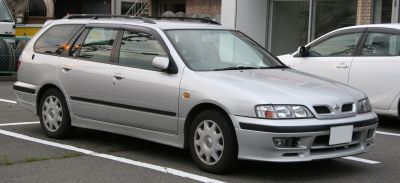
| Production: | 1998-2002 |
|---|---|
| Model Year: | 1998 |
| Length: | 4516-4579 mm177.8-180.3 in |
| Width: | 1715 mm67.5 in |
| Height: | 1450 mm57.1 in |

| Model Year: | 2015 |
|---|---|
| Length: | 4595 mm180.9 in |
| Width: | 1760 mm69.3 in |
| Height: | 1485 mm58.5 in |
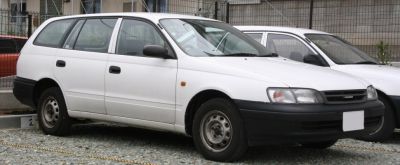
| Production: | 1992-1997 |
|---|---|
| Model Year: | 1992 |
| Length: | 4545 mm178.9 in |
| Width: | 1695 mm66.7 in |
| Height: | 1450-1470 mm57.1-57.9 in |
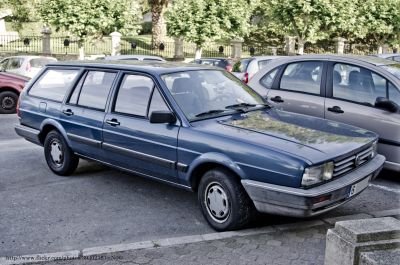
| Production: | 1980-1989 |
|---|---|
| Model Year: | 1981 |
| Length: | 4545 mm178.9 in |
| Width: | 1695 mm66.7 in |
| Height: | 1385-1465 mm54.5-57.7 in |
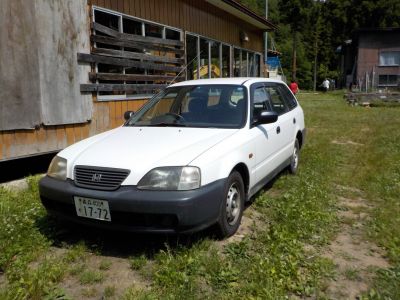
| Production: | 1996-2004 |
|---|---|
| Model Year: | 1996 |
| Length: | 4570 mm179.9 in |
| Width: | 1695 mm66.7 in |
| Height: | 1465 mm57.7 in |

| Production: | 2001-2004 |
|---|---|
| Model Year: | 2002 |
| Length: | 4550 mm179.1 in |
| Width: | 1700-1720 mm66.9-67.7 in |
| Height: | 1430 mm56.3 in |
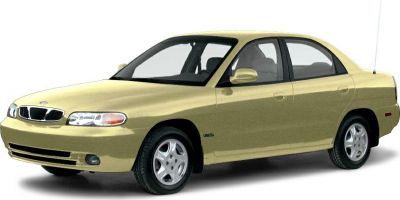
| Production: | 1997-2001 |
|---|---|
| Model Year: | 1997 |
| Length: | 4550 mm179.1 in |
| Width: | 1720 mm67.7 in |
| Height: | 1470 mm57.9 in |
